
Pentapeptide-18 (Leuphasyl) – 200MG
$212.00
Discount per Quantity
| Quantity | Discount | Price |
|---|---|---|
| 5 - 8 | 5% | $201.40 |
| 9 + | 10% | $190.80 |
Scientific Overview of Pentapeptide-18 (Leuphasyl)
Pentapeptide-18, often referred to as Leuphasyl, is a synthetic peptide modeled after the naturally occurring enkephalin family, which are short neuropeptides associated with interactions at opioid receptors. This class of peptides is of particular interest due to their involvement in signaling pathways that influence neurotransmitter release and cellular communication. Pentapeptide-18 is structurally related to leu-enkephalin but modified through the substitution of D-alanine for glycine in the second position, a change designed to enhance stability and functional properties in experimental environments.
In research contexts, Pentapeptide-18 has been explored for its potential to modulate cellular pathways linked to muscle contraction, neurosignaling, and pigmentation processes. Its ability to penetrate the epidermal barrier in laboratory models has attracted attention in skin-focused investigations, where it is thought to influence calcium dynamics and neurotransmitter activity. Additionally, structural modifications to Pentapeptide-18, such as extending the chain with D-tyrosine, have been proposed to alter its activity, particularly in relation to pigment production.
Alternative Names: Leuphasyl
Pentapeptide-18 Studies and Research Data
Insights into Neurotransmitter Modulation
Experimental work suggests that Pentapeptide-18 may influence the release of acetylcholine, a neurotransmitter often associated with muscle contraction. By potentially reducing acetylcholine secretion at the synaptic cleft, this peptide could mimic certain properties of enkephalins, which are believed to regulate neurotransmitter dynamics. Proposed mechanisms include modulation of calcium influx within presynaptic neurons, as calcium is closely linked to neurotransmitter exocytosis. Early studies have also noted a possible decrease in glutamate release, suggesting that Pentapeptide-18 might have broader implications in neurotransmission models.
Experimental Findings in Muscle-Related Studies
Research models have proposed that Pentapeptide-18 could reduce electrical signaling at the neuromuscular junction, thereby modulating muscle tone in controlled settings. Reports describe decreases in contraction-related activity and associated reductions in wrinkle formation in skin studies, with quantified decreases noted in specific facial regions. Comparative experiments testing Pentapeptide-18 alone and in combination with related peptides, such as Argireline, suggest that synergistic interactions may enhance outcomes, though these remain within preclinical or experimental cosmetic research frameworks.
Pentapeptide-18 Explorations in Pigmentation Pathways
Modifications of Pentapeptide-18 to generate hexapeptide variants incorporating D-tyrosine have been investigated for their influence on melanogenesis. Cell culture studies using melanoma-derived lines have suggested that such structural changes may reduce melanin production. These preliminary findings raise the possibility that altered derivatives of Pentapeptide-18 may be relevant in pigmentation research, particularly in models addressing uneven coloration or hyperpigmentation processes.
Conclusion
Pentapeptide-18 (Leuphasyl) is a synthetic peptide modeled after the enkephalin family, with research interest centering on its potential roles in neurotransmitter modulation, muscle-related signaling, and pigment production. Laboratory findings suggest pathways that may involve regulation of acetylcholine release, reduced synaptic signaling, and structural modifications that alter melanogenic activity. While promising as a subject of study, the broader implications and mechanisms remain under continued scientific exploration.
References
- Park J, Jung H, Jang B, Song HK, Han IO, Oh ES. D-tyrosine adds an anti-melanogenic effect to cosmetic peptides. Sci Rep. 2020.
- Dragomirescu, Anca O., et al. “The efficiency and safety of leuphasyl—a botox-like peptide.” Cosmetics. 2014.
- Puig, A., Garcia-Anton, J., Perez, R. & Mangues, M. Eyeseryl and Leuphasyl: Synthetic Peptides as Advanced Cosmetic Actives.
- Errante F, Ledwoń P, Latajka R, Rovero P, Papini AM. Cosmeceutical Peptides in the Framework of Sustainable Wellness Economy. Front Chem. 2020.
- Hostynek JJ, Dreher F, Maibach HI. Human skin retention and penetration of a copper tripeptide in vitro as function of skin layer towards anti-inflammatory therapy. Inflamm Res. 2010.
- Schagen SK. Topical Peptide Treatments with Effective Anti-Aging Results. Cosmetics. 2017.
- Montiel, A. V. F., Puche, J. C. & Montiel, A. P. Cosmetic or dermopharmaceutical composition comprising enkephalin-derived peptides for reducing and/or eliminating facial wrinkles. 2015.
Disclaimer:
The products mentioned are intended solely for laboratory research and in-vitro experimentation. They are not approved for human or animal use of any kind. All details provided are for educational purposes only. By purchasing from this site, you agree to comply with our Terms and Conditions.
21 reviews for Pentapeptide-18 (Leuphasyl) – 200MG
Only logged in customers may leave a review.
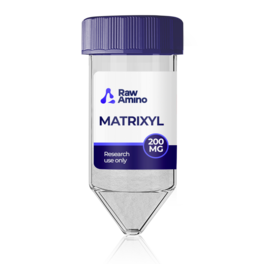
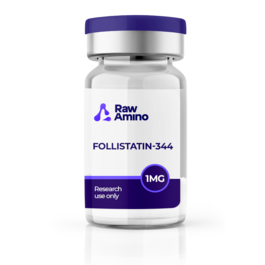
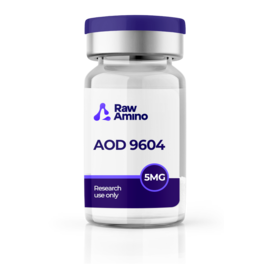
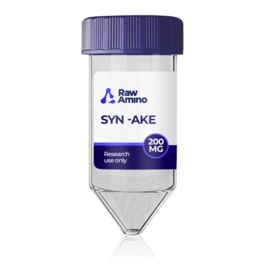
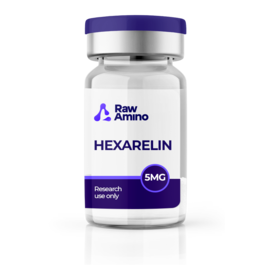
john many –
Good experience
Sarah T –
Won a retrun customer!
Bobby D –
Joshua Q –
Carl R –
Carol Q –
Catherine N –
Robert I –
cynthia K –
Rhonda T –
terri u –
leah i –
Jennifer G –
john berger –
beth G –
watkin samber –
christopher Lopez –
brooks edward –
williams robert –
craig dav –
Brandon G –